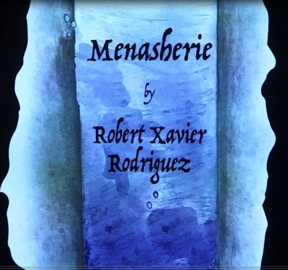Menasherie (2015)
Animal Poems of Ogden Nash
for SSA Chorus and Piano Solo
Duration: 8-9 minutes
Commissioned by the Young People’s Chorus of New York City
Premiere Performance: November 3, 2018
Young People’s Chorus of New York City; Francisco Nuñez, Conductor
 Reviews:
Reviews:
Young Voices Shine in Young People’s Chorus of NYC New Commissioning Project
…Several works on the program highlighted specific skills of the young singers. Robert Xavier Rodriguez’s Menasherie featured their gift of performance through a clever setting of nine of Ogden Nash’s animal poems. From the guppy’s sly ballad to the duck’s tango, the fly’s pitched buzzing atop a Bach-inspired harmonization to the porcupine’s spiky screech, Menasherie transformed YPC into nine different theatrical characters. If singing and acting weren’t enough, the singers’ artistic skills were utilized in projections of the animals throughout the piece.
Alyssa Kayser-Hirsch, I Care if You Listen
Composer Notes:
Menasherie (2015) for SSA chorus and piano solo comprises nine musical settings of humorous poems by the American poet Ogden Nash (1902-1971), all about animals. Full of rhymes on imaginary words (“family”/”calamily”), the poems sound as if they are written for children. Adults, however, have always been Nash’s primary audience. The music is simple and direct, with playful musical imitation of the animals depicted, but with layers of harmonic and contrapuntal complexity, in which listeners can exercise their memories of popular dance forms and recognize references to musical classics.
“The Pig” has a grunting accompaniment. The “Rhinoceros” is strangely sweet and wistful. “The Duck,” is a perky tango. “The Octopus” has watery, intertwining contrapuntal lines in an eight-beat pattern built on the octatonic scale. “The Fly” is based on Bach’s harmonization of the chorale “O Ewigkeit, du Donnerwort,” accompanied by pitched buzzing. “The Wasp” is a quick, menacing march à la Kurt Weill. “The Guppy” is a graceful soft-shoe. “The Porcupine” has a spiky staccato accompaniment with interpolated “ha-has“ and “ouches.” The last movement portrays a tiny organism, “The Germ,” in a comical fusion of pelvis-twisting 50s rock and echoes of The Rite of Spring. The poems are set with the permission of the Ogden Nash Estate, represented by Curtis Brown, Ltd.